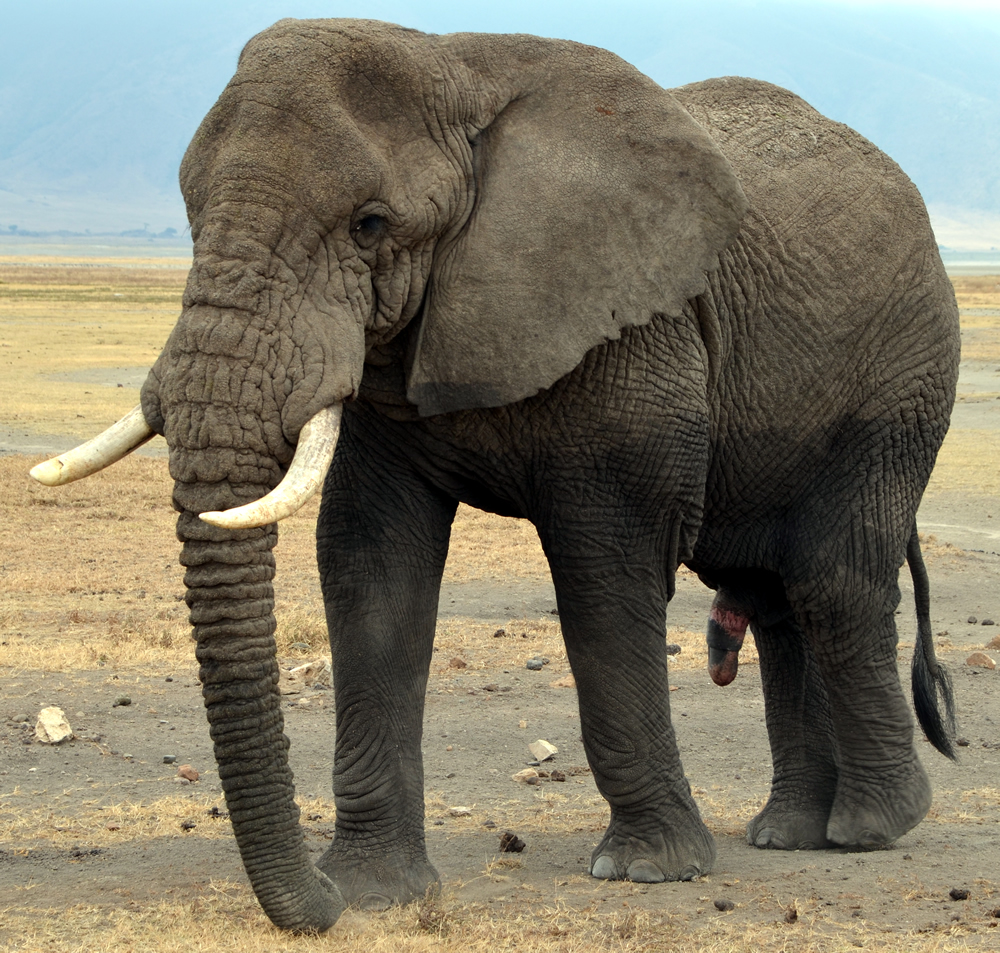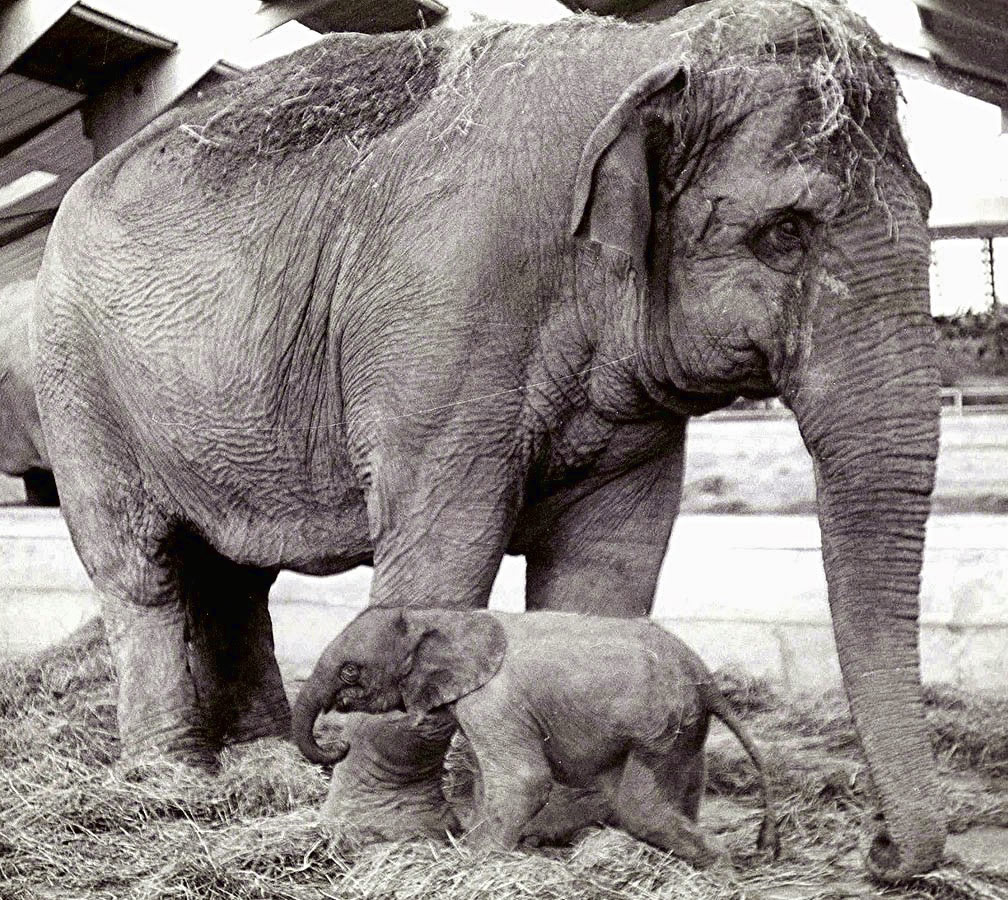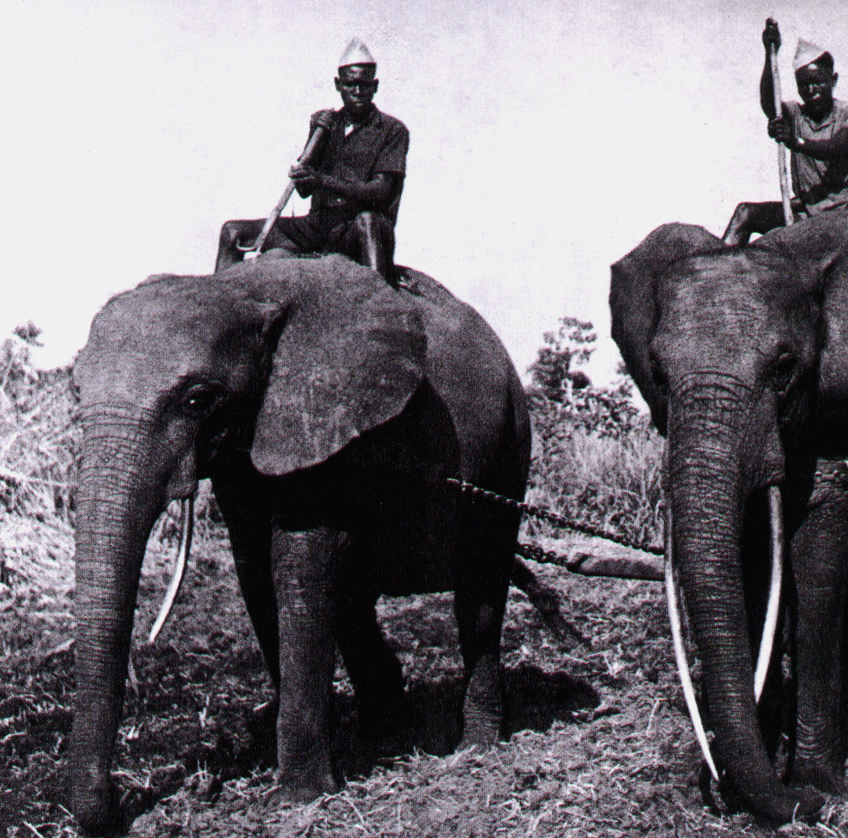How do different types of elephants differ?
The difference between the African and the Asian elephants, looking closer, is remarkable . Actually they resemble each other only from a distance by their outward appearance. Both are big, have a trunk, a tail and partly tusks.
What are the differences between African and Asian elephants?

Weight: 4000 – 7000 kg
Shoulder height: 3 – 4 Meter
Skin: More wrinkled
Number of ribs: Up to 21 pairs
Highest point: On the shoulder
Size of the ears: Bigger, reach up over the neck
Shape of the belly: Diagonally downward in the direction of the hind legs
Shape of the head: Not crumpled from the front to the back, no humped structures, no dent
Teeth: Lamella profile of the molars diamond-shaped
Tusks: Existing with both sexes. Bigger with the males
Lower lip: short and round
Food: Mainly leaves
Trunk: With more rings, less hard
Trunk end: With two fingers
Toenails: Foreleg 4 or rarely 5 / Hind leg 3 or rarely 4

Weight: 3000 – 6000 kg
Shoulder height: 2 – 3.5 Meter
Skin: Smoother
Number of ribs: Up to 20 pairs
Highest point: On the back
Size of the ears: Smaller, do not reach over the neck
Shape of the back: Convex or straight
Shape of the belly: Either almost straight or sagging in the middle
Shape of the head: Crumpled from the front to the back, with humped structures on the top of the head, forehead dented
Teeth: Lamella profile of the molars strongly compressed
Tusks: Males in many cases having tusks. Females having only rudimentary or no tusks
Lower lip: long and taper
Food: Mainly grass
Trunk: With less rings, harder
Trunk end: With one finger
Toenails: Foreleg 5 / Hind leg 4 or rarely 5
 PDF – Table: differences-between-african-and-asian-elephant
PDF – Table: differences-between-african-and-asian-elephant
Are there half-breeds?
The genetic differences however are so great that they actually cannot be interbred.
The only known crossbreed between an African and an Asian elephant was born in the Chester zoo in 1978. The bull calf “Motty” died, despite intensive nursing care, two weeks after its birth. Its father was the African bull “Jumbolino” and its mother the Asian elephant cow “Sheba”.

Is keeping African elephants more difficult?
The rumour is wrong that Asian elephants would be easier to keep in zoos or circuses than African elephants.
Both elephant species live in various circuses and zoos. The only thing that rendered the Asian elephants better known as working, zoo and circus elephants is the Asian tradition of catching and taming wild elephants.
When the Belgians in colonial times intended to stub the jungle of Belgian Congo, they employed Indian mahouts, who successfully caught and trained the African elephants according to the Asian method. Nowadays safaris on the backs of African riding elephants become more and more popular in Africa.
Also the most famous zoo and circus elephant “Jumbo” was a african bull.




great experiance
Thank you very much for the compliment
Good to know.Useful information.Tks
I would have thought that it would have been a mule. Not able to reproduce but able to survive. Good to know. Very informative.
If these two elephants are so different how can still socialise in zoos?
Hello Narmin
Many thanks for your question. You are right, because there are still zoos and circuses which show African and Asian elephants together in an enclosure or in the show.
Modern zoos, which keep their elephants according to the latest zoological and biological knowledge, usually refrain from keeping both elephant species together.
The two species of elephants actually differ very little in their social interactions and behaviour. To my knowledge, African elephants are somewhat more nervous and impatient than their Asian relatives. I could see this for myself as elephant keeper in the circus Knie, because the circus also kept and presented an African elephant (Malaika) together with the Asian elephants.
Many greetings from Switzerland
Georges